Houston Weather: Thunderstorm safety tips from National Weather Service
HOUSTON - The Houston/Galveston Office of the National Weather Service continues its Severe Weather Awareness Week with a focus on Thunderstorms on Tuesday, especially the threats of lightning, hail, and wind.
MORE: National Weather Service to shares safety tips all week-long for Severe Weather Awareness Week
Thunderstorms can bring multiple risks.
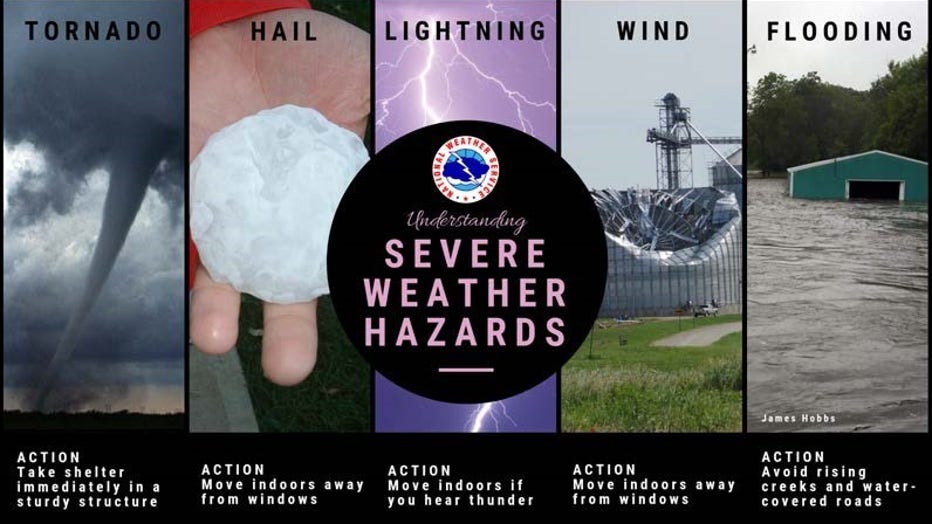
(Photo courtesy of National Weather Service)
A thunderstorm is considered severe when it produces one or more of the following: hail at least 1 inch in diameter (quarter-sized hail or larger), wind gusts of at least 58 miles per hour, or a tornado.
DAY 1's SAFETY TIPS: Heat safety tips from the National Weather Service
Here's something to remember:
- Thunderstorms don't have to be severe to produce lightning
- Heavy rain from thunderstorms can cause flash flooding
- Strong wind gusts can cause widespread damage
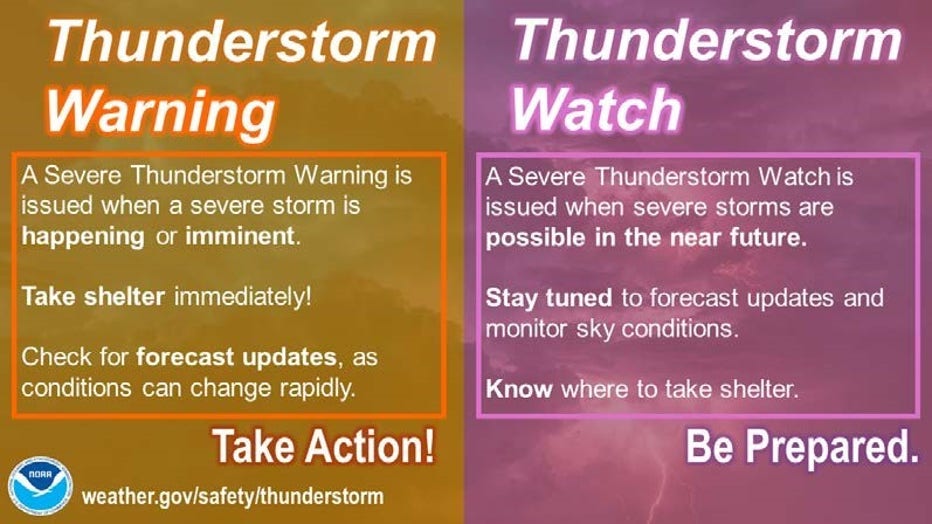
(Photo courtesy of National Weather Service)
One important precaution you should take to protect yourself and your family is to always stay weather aware.
Make sure to have multiple ways of receiving a weather warning when they are issued, know what to do when watches and warnings are issued, know where your safe location is in the event of a warning, and stay informed with a trusted source of information.
Download the FOX 26 Houston Weather App
What should you do if you encounter severe weather? Check out these tips on the actions you should take when severe weather threatens your area. Be prepared and not scared.

What should you do if you are driving during a storm?
What should you do if you are driving during a storm?
Severe thunderstorms can often strike after dark or at bedtime during overnight hours. If storms are possible in your area at night, it’s important you have multiple ways to get the alerts!
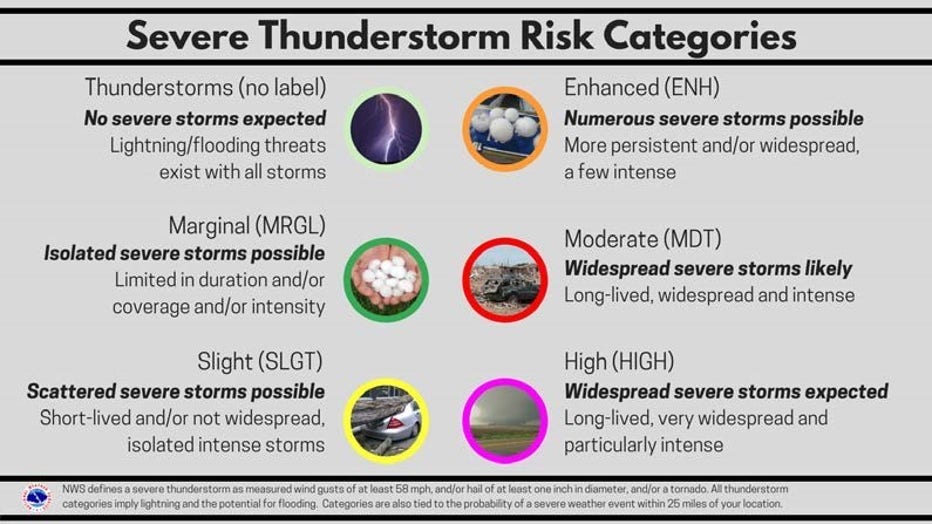
(Photo courtesy of National Weather Service)
Don’t wait until the day of the storm to begin protecting yourself. If the forecast calls for severe weather, begin preparing NOW. Stay Weather-Ready
WIND AND HAIL
Thunderstorms can bring multiple risks, one being extreme or high winds. Seek shelter immediately if damaging winds are expected and stay away from windows!
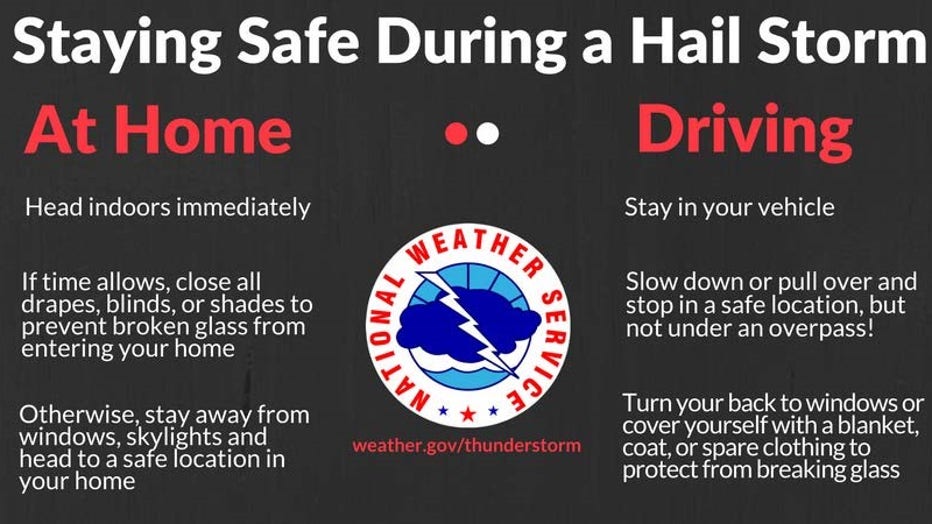
(Photo courtesy of National Weather Service)
Large hail has the potential to cause significant damage. Make sure you have a plan if you find yourself in the path of a hail storm.
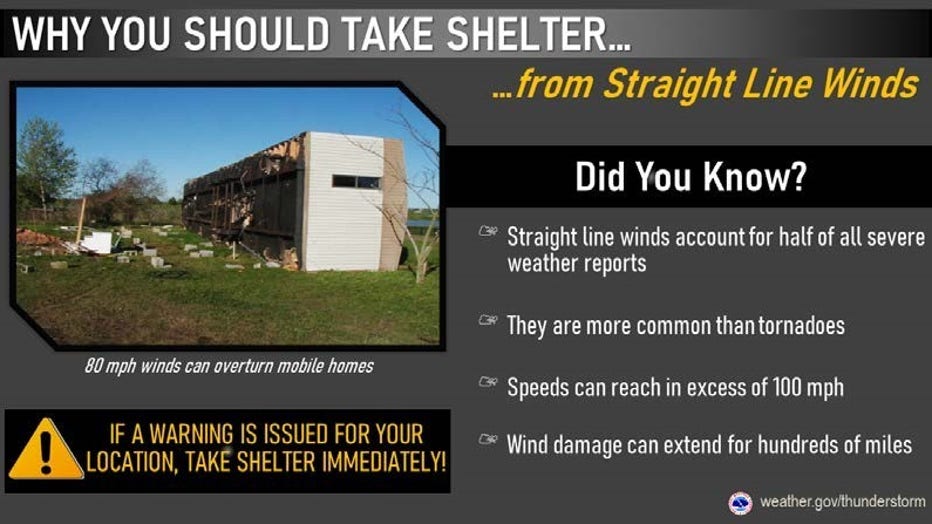
(Photo courtesy of National Weather Service)
LIGHTNING
Lightning strikes the U.S. 25 million times a year, which sometimes results in death or serious injury. You are safest indoors or inside a hard-topped, enclosed vehicle.
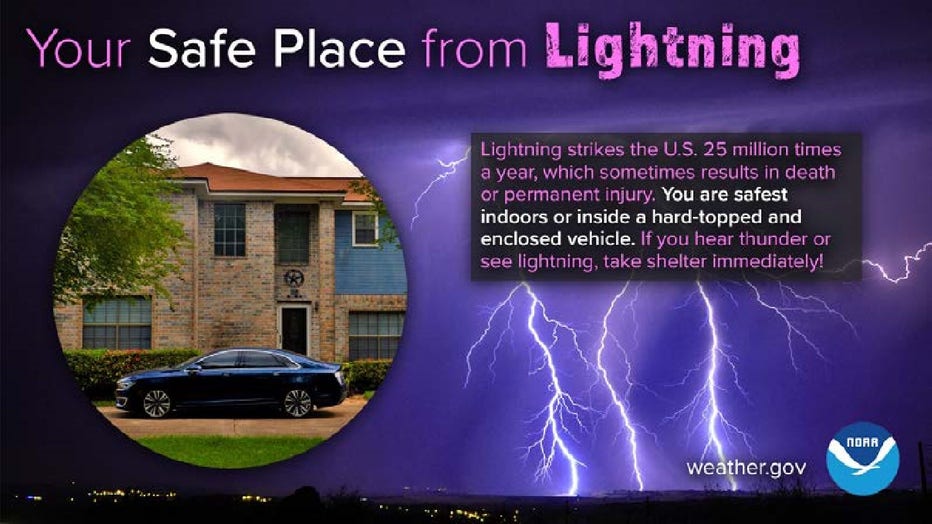
(Photo courtesy of National Weather Service)
Lightning can strike up to 10 miles away from a storm. Make sure to get everyone inside at the first sign of thunder or lightning, and keep them inside until at least 30 minutes after the last sign of thunder or lightning.
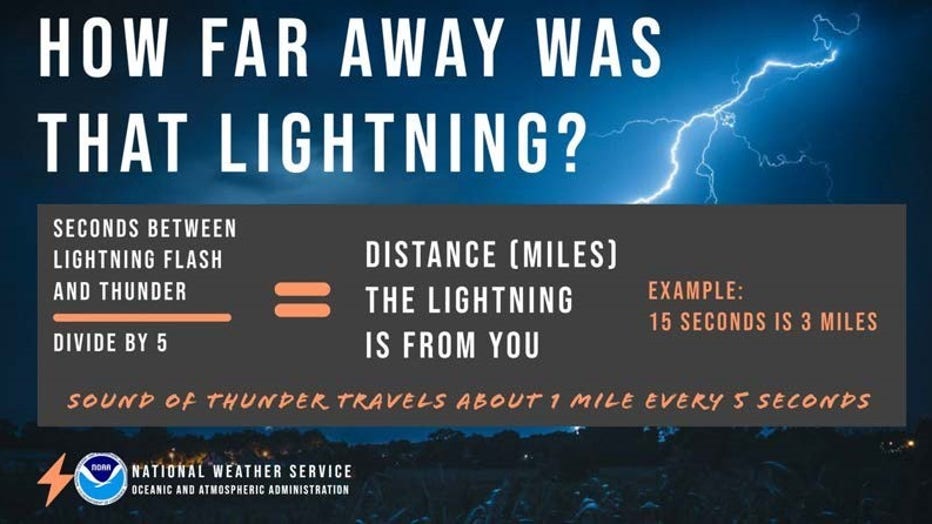
(Photo courtesy of National Weather Service)

